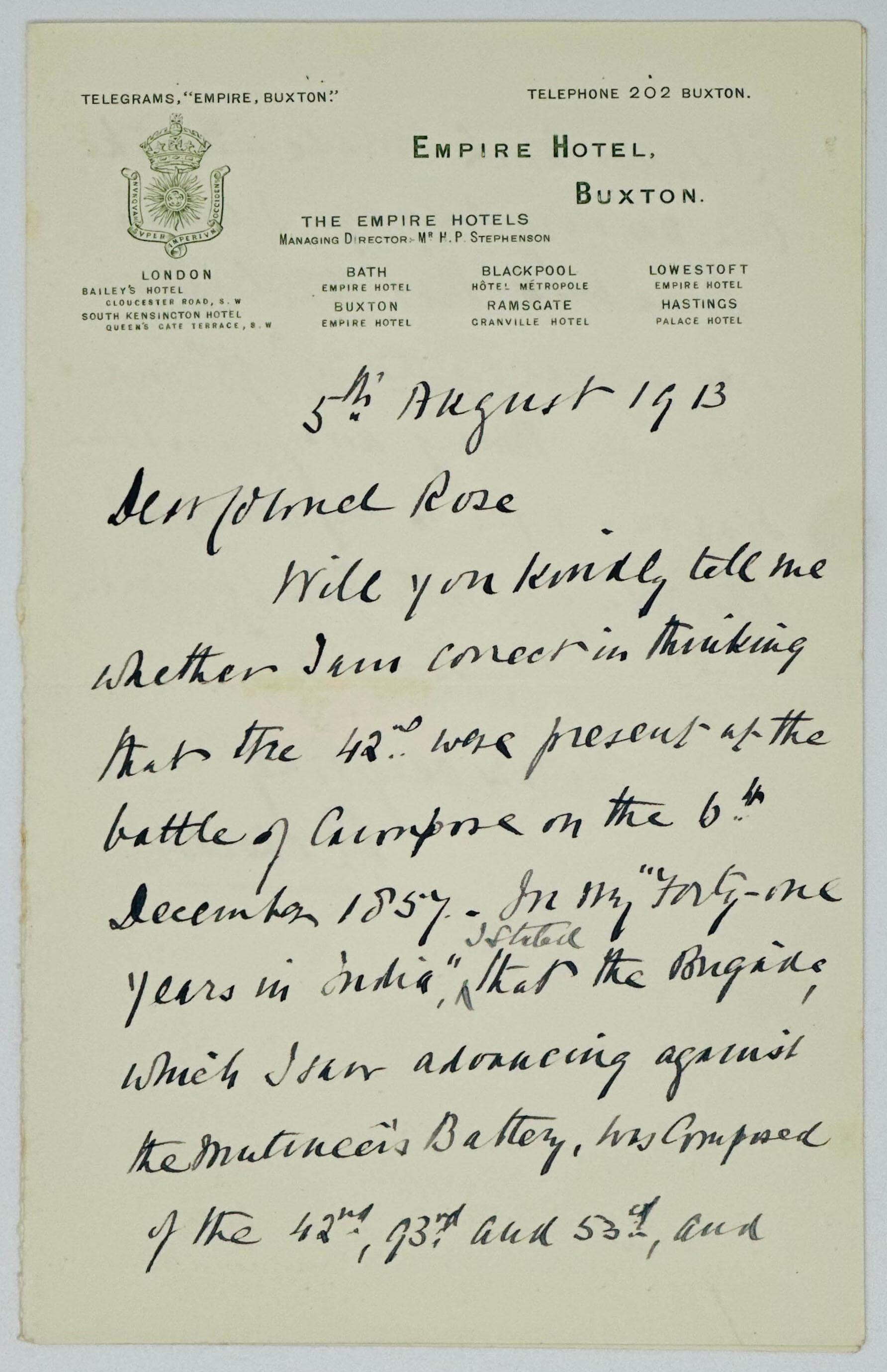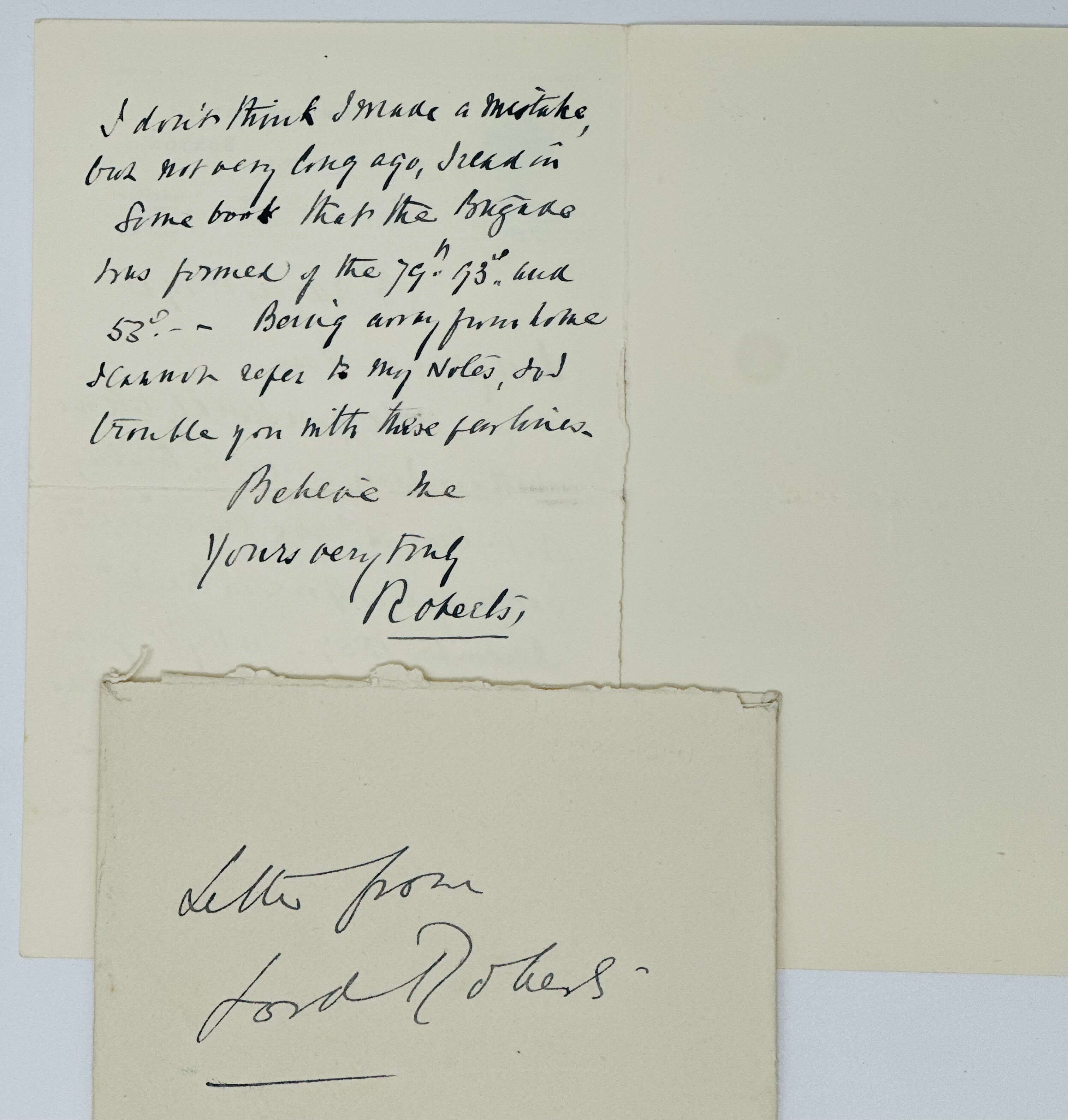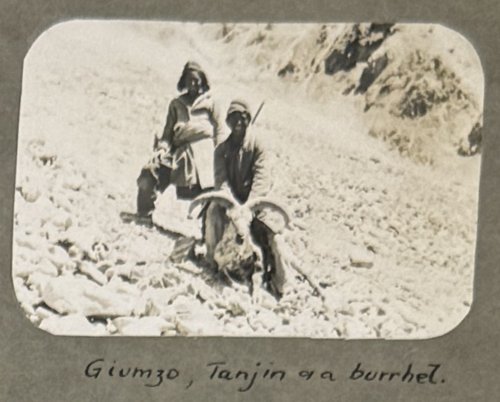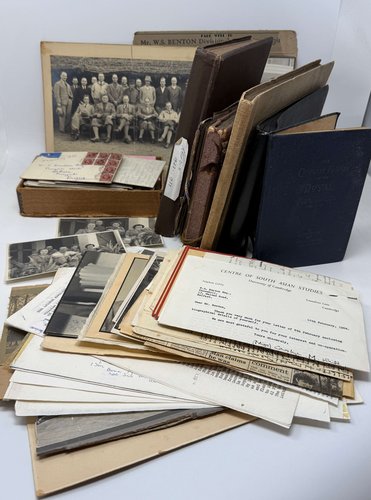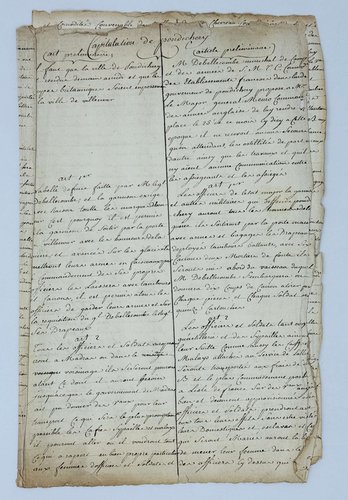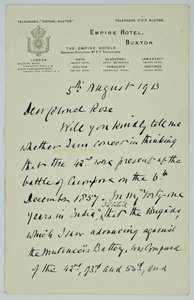
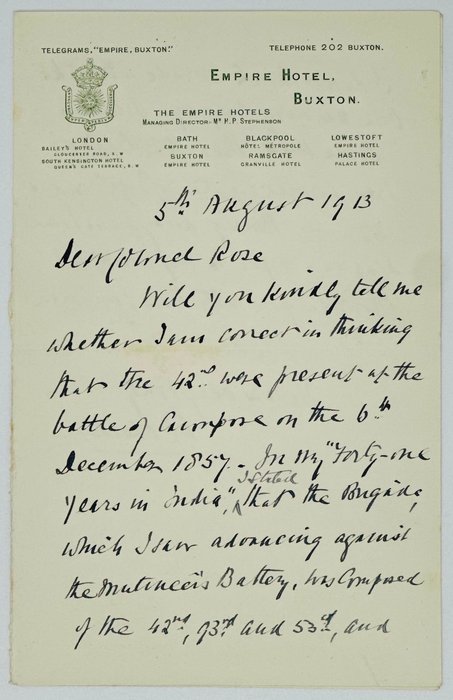
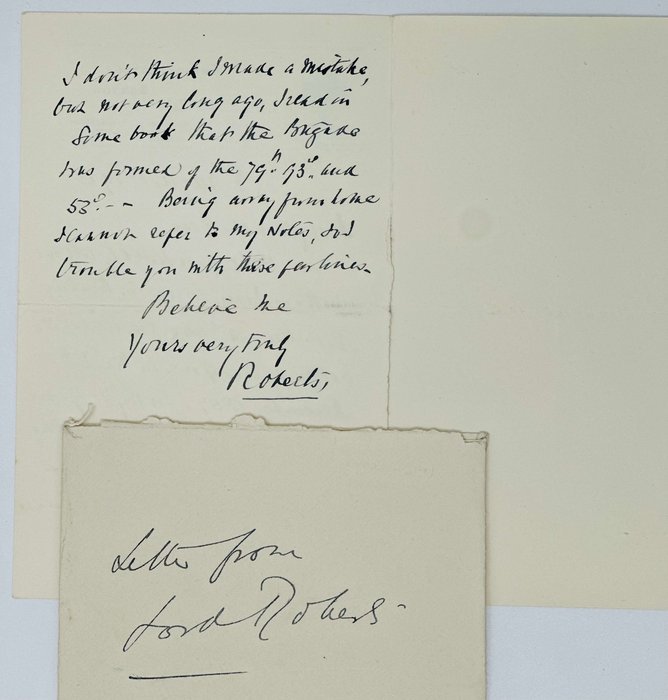
#MB90
1913
Small Octavo bifolium (ca. 18x11,5 cm). 2 pp. Black ink on writing paper with a printed letterhead of the “Empire Hotel, Buxton.” With the original envelope with a period ink note (in different hand) “Letter from Lord Roberts.” The letter with fold marks, a tear along the bottom part of the bifolium’s centrefold, otherwise a very good letter.
In his letter British Field Marshal Lord Roberts, “one of the most successful commanders of the 19th century” (Wikipedia), tries to clarify some details of the Second Battle of Cawnpore (19 November – 6 December 1857) in which he took part as a staff officer of Sir Collin Campbell, Commander-in-Chief of India. Addressing to “dear colonel Rose”, Roberts writes: “Will you kindly tell me whether I am correct at the battle of Cawnpore on the 6th December 1857. In my “Forty-one years in India” I stated that the Brigade which I saw advancing against the mutineers’ Battery, was composed of the 42nd, 93rd, and 53rd, and I don’t think I made a mistake, but not very long ago I read in some book that the Brigade was formed of the 79th, 93rd, and 53rd. Being away from home I cannot refer to my notes, so I trouble you with these few lines.” The book he refers to in the letter was published in London in 1897 by Richard Bentley.
“Field Marshal Frederick Sleigh Roberts, 1st Earl Roberts, VC, KG, KP, GCB, OM, GCSI, GCIE, KStJ, VD, PC was a British soldier who was one of the most successful commanders of the 19th century. He served in the Indian rebellion, the Expedition to Abyssinia and the Second Anglo-Afghan War before leading British Forces to success in the Second Boer War. He also became the last Commander-in-Chief of the Forces before the post was abolished in 1904” (Wikipedia).
“The Second Battle of Cawnpore (19 November – 6 December 1857) was a battle of Indian rebellion of 1857. It was decisive as it thwarted the rebels' last chance to regain the initiative and recapture the cities of Kanpur (Cawnpore) and Lucknow” (Wikipedia).

